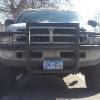
using EQ to modify the fs curve of my sub (winisd)
By
ncc74656, in Subwoofers / Speakers
-
Recently Browsing 0 members
No registered users viewing this page.
-
-
Recent Topics
-
- 1 comment
- 29 views
-
- 6 comments
- 1,714 views
-
- 20 comments
- 450 views
-
- 400 comments
- 34,569 views
-
- 3 comments
- 165 views
-
- 4 comments
- 299 views
-
-
-
Recent YouTube Posts


